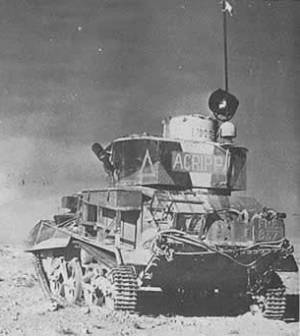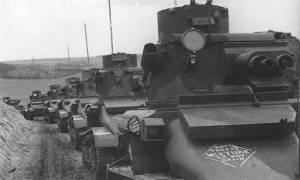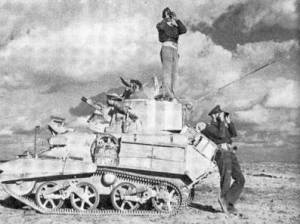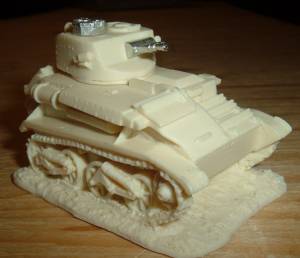 |
|
|
|
|
|
|
|
|
|
All prices are in US$.
Shipping is 20% on orders under $30.00, 15% from $30 up to $100.00, and just 10% for orders of $100.00 or more.
Our online shopping cart accepts payments from PayPal or from any major credit card. We will also accept US$ money orders if you email us your order directly.
Vehicle hulls and turrets are cast in resin, while gun barrels, hatches and other small bits are white metal. Vehicles, equipment, and figures are supplied unpainted and require some assembly.
|
|
|
|
 |
|
|
|
|
|

|
|
The Vickers Light Tank Mark VI represented the peak of development of this light tank series. They were agile vehicles, capable of impressive cross-country speeds, and armed with both 12.7mm (.50 cal) and a 7.7mm (.303 cal) machine guns in the two-man turret.They were widely used throughout the 1930s and the early war years, many for policing duties in the far-flung regions of the empire. During action in WWII, however, they soon revealed themselves as being virtually useless, especially against other tanks.The thin armour, penetrated even by small-caliber armour-piercing projectiles, and the mounting of nothing heavier than a machine gun made them of little use as comabt tanks. This was proven conclusively in France during 1940 when their deployment as such served to have them suffer accordingly. Unfortunately, the lack of any other options in France and North Africa meant their continued use until proper replacements could be produced and delivered.
|
|
|
  
|
|
Technical Data
|
|
|
|
|
|
|
|
|
|
|
|
|
|
|
|
|
|
|
|
|
|
|
|
|
|
|
|
|
|
|
|
|
|
1 x 12.7mm (.50 cal) Vickers MG; 1 x 7.7mm (.303 cal) Vickers MG
|
|
|
|
|
|
|
|
|
|
|
|
|
|
|
|
|
|
|
|
|
|
|
|
|
|
|
|
|
Sources:
German Tanks of World War II - The complete illustrated history of German armoured fighting vehicles 1926-1945, F.M. vonSenger und Etterlin (Galahad Books, NY: 1969)
Panzer-Division 1935-1945 (1) The Early Years 1935-1941, Robert Michulec (Concord Publications, Hong Kong: 2000)
|
|
|
|
